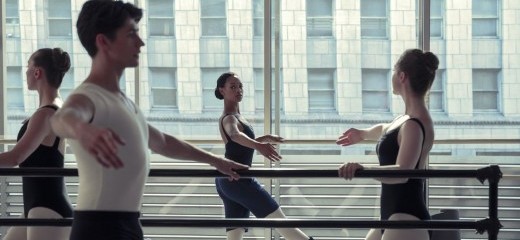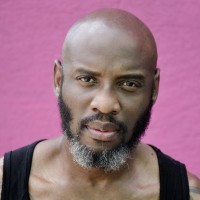
It Is What It Is: Tiny Pretty Things in Black and White
by Gregory King
I recoil at my own skepticism knowing conversations around racism in ballet may never end because ballet will continue to be what it is; white. However you interact with ballet—whether as a practitioner, administrator, or enthusiast—it maintains a white centrality because of racism. Unequivocally, white centers whiteness, causing everything it comes in contact with to be othered, scrutinized, and often consumed before being disregarded. When whiteness is centered, Blackness is usually relegated to the margins, deemed a supporting act. And if, somehow, white normalcy gets subverted, the fact that it is systemic ensures that the tyrannical rock on which it was built remains planted.
Call me cynical, but I’ve given up on the concept of equity in ballet. I do not expect ballet directors to hire more Black dancers, any more than I expect white dancers to speak out against racism in ballet. If ballet companies were genuinely interested in equity, we would not still be having this conversation. If the gatekeepers of the art form wanted to be just, they would have been deliberate in eradicating exclusionary practices after critically engaging with Dr. Brenda Dixon Gottschild’s 2003 seminal text The Black Dancing Body: A Geography from Coon to Cool. Explicit strategic actions would have been implemented to increase representation of Black, Indigenous and dancers of color on company rosters when Gia Kourlas asked, “Where are all the Black Swans?” in her probing New York Times article of 2007. When the culture of exclusion persisted, dance scholar Dr. Nyama McCarthy-Brown reminded us how issues of race continued to affect American ballet in her 2010 article “Dancing in the Margins: Experiences of African American Ballerinas.” Still, the shift was paltry.
One recent Sunday, I decided to indulge in the new Netflix series Tiny Pretty Things. Based on the novel written by Dhonielle Clayton and Sona Charaipotra, Tiny Pretty Things tells the story about the grueling competitive world of ballet where the catastrophic accident of a star student at a ballet school opens room for a talented, driven Black student. The series did very little to stray from stereotypical, predictable, and rudimentary characters, writing, and storylines.
While it boasted a skilled cast of dancers, the standout was June, a character played superbly by Daniela Norman. A student at the prestigious Archer School of Ballet, June dreams of becoming a prima ballerina but deals with insecurities worsened by an overbearing and often displeased mother. Truth be told, the first two episodes were weak, so I pulled the plug on continued viewing and didn't watch the series long enough to witness any character and plot line development. That being said, in the two episodes I did watch, June’s technical proficiency in ballet was instantly visible and superior, when compared to her castmates. I later found out that Norman trained at the English National Ballet. I provide this as context because we were to believe that the Archer School of Ballet was an elite institution, cultivating world class ballet dancers. If this was the case, I would argue that they could have done better at casting more skilled ballet practitioners…even as students.
The first two episodes of Tiny Pretty Things were flawed on many levels. From a surplus of characters to its rotating door of storylines, Tiny Pretty Things had everything, yet somehow it managed to be basic. I’m sure some would say I didn’t attend to the entire series long enough to form an informed opinion, but theatre critic Michael Feingold once wrote, “you don’t have to drink an entire barrelful of bilgewater to know that it’s bilge!” The episodes I did see missed opportunities to address troubling issues. It only signaled to the adversity of eating disorders after we saw the character Oren (Barton Cowperthwaite) forcing himself to throw up in the bathroom, and it meagerly mentioned the painful physical demands of the discipline when Bette (Casimere Jollette) pulled a necrotic toenail from her bloody feet. Yes, ballet is a competitive art form rife with rivalries, but the creators overlooked significant chances to highlight cultural shortcomings by only shakily addressing bullying, predation, and drug abuse. Tiny Pretty Things served as a reminder of the physical, emotional, and psychological scarring that has been inflicted on some ballet dancers. And unfortunately, while attempting to interweave its multiple storylines, intentional considerations were not given to evocatively address ballet’s oppressive and abusive culture of racism.
Neveah, the protagonist played remarkably by Kylie Jefferson, and the only Black female dancer in the two episodes I saw (and I suspect in the entire series), was the recipient of that kind of abuse. After receiving a scholarship, Neveah is thrown into a world dominated by Eurocentric aesthetics, and her abuse was brought to life by micro aggressions and racial violence, right from the onset. Four minutes and thirty four seconds into the first episode, white headmistress Madame Dubois (Lauren Holly) introduced Neveah to a journalist saying, “We helped a girl escape her dead-end life in Compton,” never quieting long enough to hear Neveah amend that she was actually from Inglewood. Later in the episode, Neveah was asked by Dubois to use a curated script when giving a public interview, ridding her of her own story and making her lived experiences invisible. What Tiny Pretty Things blatantly displays but fails to unpack is how the Black girl was supposedly “saved” by whiteness, which is both a problematic social metaphor and a stained historical canopy.
In 2000, Center Stage premiered as a story of rigidity and competitiveness in the ballet world. We also saw the one Black ballerina shooting her shot at stardom. Twenty years later, we see another version of that same Black girl—sassy, combative, fiery, gritty, and an underdog, working to get a chance—a stereotypical portrayal that deemed Neveah needing to be policed and saved. These historical tropes serve as justification to control Black women and benefit mainstream society in its negative understanding of Blackness—a settling into a repetitive and unevolved pattern. Attention writers, directors, producers, choreographers, and casting directors: these narratives must be resisted. It’s been two decades since Center Stage, and creatives continue to bombard audiences with the impression that Black girls need saving...and that whiteness alone can save them.
I must confess, some of the Black storylines are not explicitly untrue. There are Black ballet dancers; they come in different hues and with different body types. They are often also trained in additional genres like modern and African diasporic forms, and when introduced to ballet spaces, they regularly stand out, being reminded they are the minority. Unfortunately, the splendor of their talent may never save them as they are relentlessly being measured by fellow dancers, teachers, directors, audiences, and themselves, against something they never will be. For the Black ballet dancers who have survived this kind of scrutiny, your resilience triumphed, despite indefatigable assaults on your Blackness.
Black people are fighters...we have to be. But we are not a monolith, and our stories require more depth, nuance, and range. Parents must desist from surrendering their Black children to the trauma of living up to the expectations of white American ballet institutions, and we must work prudently to create spaces for them to thrive in healthy and affirmative ways.
Booking a gig is a dream for any actor. For dancers, a tv series is a monumental and exciting accomplishment, so I offer this review as a comment, an observation, and a critique on stereotypes, exploitation, underrepresentation, and racism—particularly in ballet. I hope it also functions as a reminder that solidarity statements, equity committees, and diversity officers are only gestures if racist ideologies are maintained. Some progressives believe race equity training, reading books on how to be anti-racist, and marching and shouting, “Black Lives Matter!” alone will end racism, but Black dancers are being abused in white spaces. Casting us in stereotypical roles perpetuates that abuse.
Tiny Pretty Things, Netflix, Directors of episodes one and two: Samir Rehem and Gary Fleder, Program creator: Michael MacLennan.
By Gregory King
December 27, 2020









